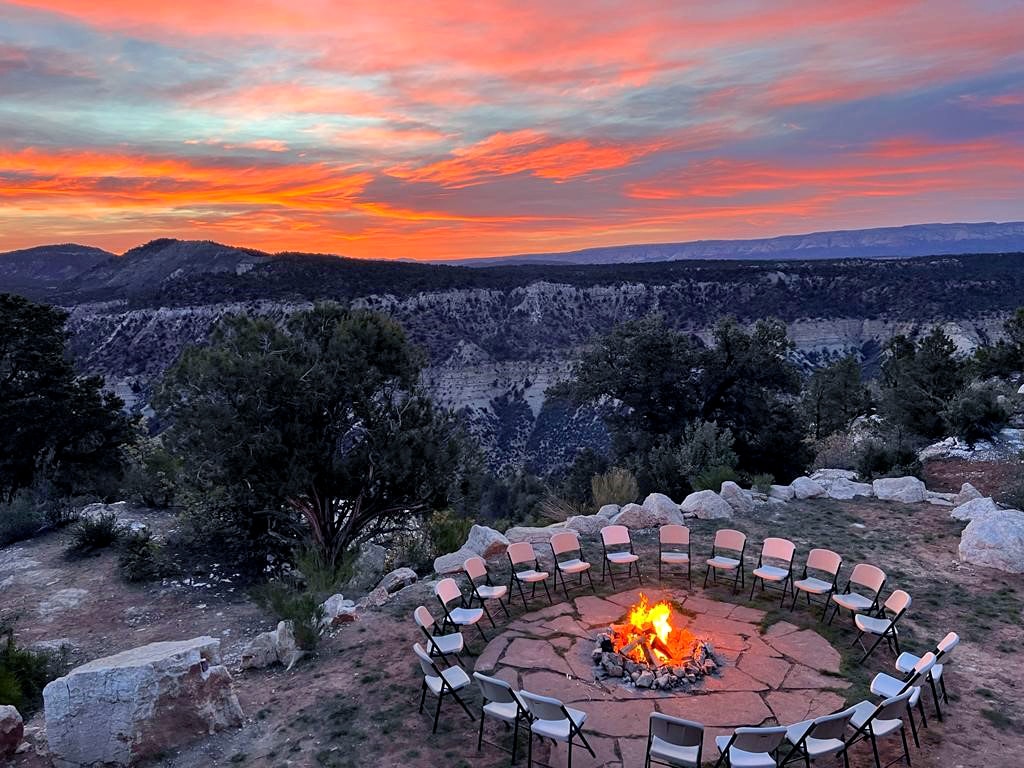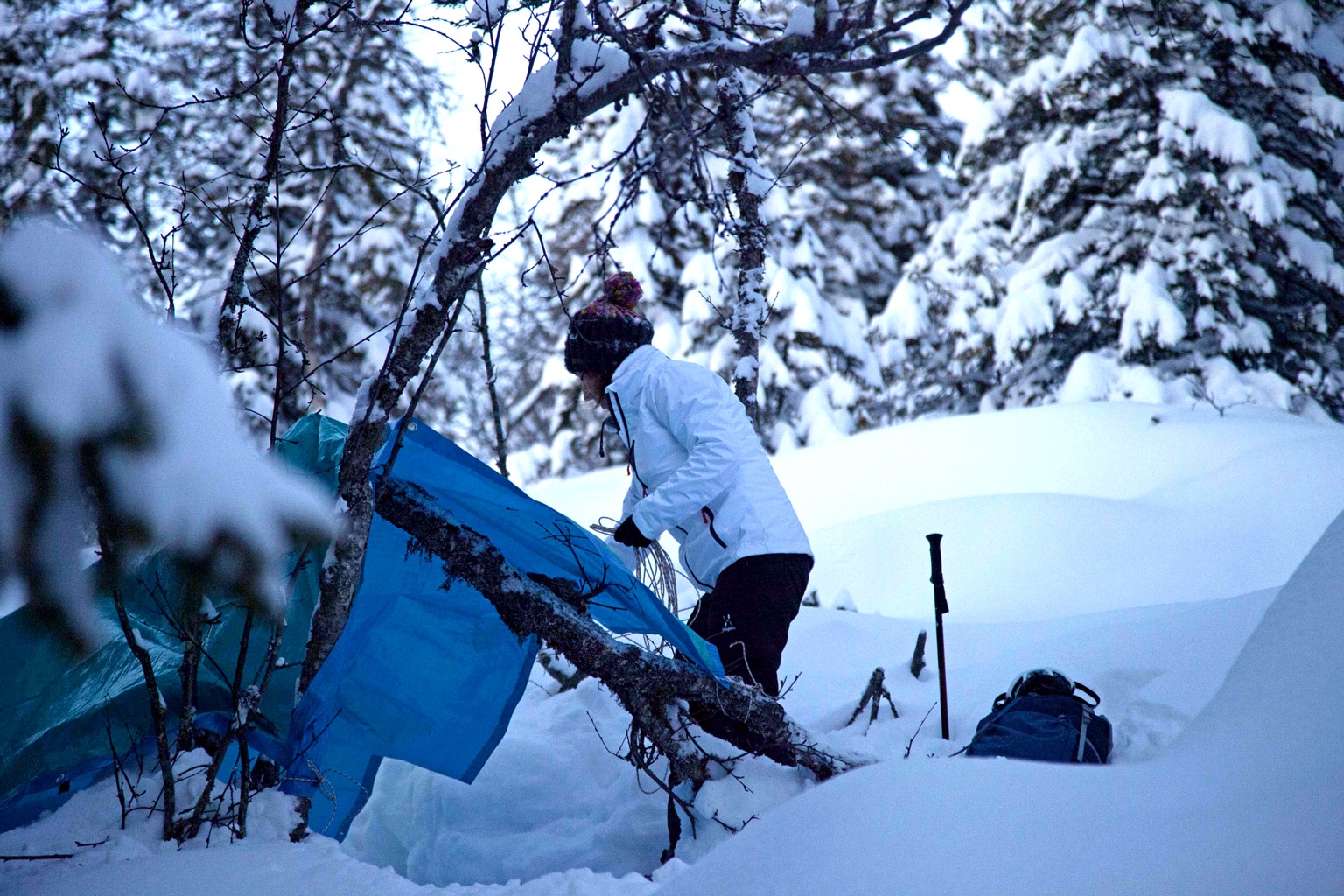Human beings have long understood that nature holds restorative powers fundamental to well-being. Think of Ralph Waldo Emerson’s exhortation to “live in the sunshine, swim the sea, drink the wild air.” But since the Industrial Revolution, many of us have lost touch with nature, at great cost to our physical, mental, and emotional health. That’s unfortunate, because we need it more than ever: the World Health Organization estimates that since the COVID-19 pandemic began, there has been a 25 percent increase in the global prevalence of anxiety and depression.1
People are more disconnected from themselves, one another, and the planet than ever before.2 This detachment is taking its toll in the workplace: employees have told their organizations that they are desperate to get away from endless work commitments, particularly since the boundaries between job and home have blurred for millions around the globe. At the same time, people have found joy in being outside in nature, particularly during lockdowns. Many have realized that nature is something they are drawn to when feeling distressed or down.3
Creating opportunities for individuals and teams to connect in nature can be a powerful antidote to the kind of prolonged stress that is rising in the workplace. Our work at Aberkyn’s Wilderness Trails4 offers evidence. Different from a typical weekend corporate retreat or off-site leadership event, the program guides professionals along dozens of curated wilderness trails in North America, Asia, Europe, and the Middle East. The trails offer three to five days in a remote setting, with little to no access to technology, along with peer and group coaching during hiking and other outdoor activities. Teams literally and metaphorically unplug from types of daily routines that can reduce productivity or encourage unsustainable behaviors.
Participants come back from the retreats feeling rejuvenated, both individually and as a group, and report that their sense of connection, cohesion, and performance continued when they returned to the office. They also say that they feel a greater sense of clarity and expanded perspective—invaluable in these complex and uncertain times.
As the CEO of a US manufacturer told us, after a team dinner over a campfire in upstate New York: “The conversations we just had in that field lasted about 45 minutes, but they would have taken over 30 hours of meetings. I had no idea that the team was not aligned on so many things. That was super powerful.”
Research shows that spending time in nature can improve cognitive functioning, boost connections, and be a catalyst for personal and team growth. In this article, we discuss the scientific research underpinning these effects and offer actions that companies can take to enable employees to increase their performance, adaptability, and well-being through access to nature—and to ensure that those benefits continue to flow long after the campfire goes out.

Being in nature supports attention span and creativity
In sports, it is widely recognized that alternating periods of high intensity with intervals of rest and recovery is vital for sustained high performance. While the workplace is rarely as physically demanding as the athletic world, it can be intense mentally and emotionally, especially in our current operating environment. High levels of exhaustion and burnout have consequences, as reflected in the Great Resignation trends that continue to reverberate across the working world.
However, it is not enough to be merely disciplined about taking time off for rest and recovery. Equally important is what you do during those periods. Being in nature helps with attention span, creativity, well-being, and happiness. It shouldn’t be a vacation from building these crucial skills but rather a foundational resource for individual and team development.
On a winter trail in Norway, one leader of a global organization worried that communing in nature might be a waste of time. “We were incredibly busy at work,” this senior leader said. “But before long, I realized our guards were down and we were able to be authentic and open—and to shift from a state of protection to one of learning. I was amazed.”
The environmental psychologists Stephen and Rachel Kaplan, who conducted a nine-year study for the US Forest Service,5 found that contact with nature can help alleviate mental fatigue and improve the brain’s ability to process information. The research led to their “Attention Restoration Theory,” which posits that the capacity of the brain to focus on a specific stimulus or task is limited and results in directed-attention fatigue.
The best remedy for this is a practice the Kaplans called “involuntary attention” or “soft fascination,” in which we experience a sense of awe that creates the space for reflection and introspection. The Kaplans found that being in nature encourages less active brain function, allowing people to replenish their directed-attention capacity. The mind can then focus on higher-order processes, detecting patterns and insights it might otherwise miss.
This is particularly relevant in today’s work environment, in which our increasingly digital ways of operating require continuous directed attention. Our brains were not designed to deal with the multiple channels of communication that many of us experience on a daily basis.
Examples of nature’s cognitive benefits, especially as they relate to attention fatigue, include a 2012 study by University of Utah psychology professor David Strayer and colleagues.6 As part of the study, hikers spent three days immersed in nature without any technology. Half of the hikers experienced a significant increase in performance on a creativity and problem-solving task. The findings reaffirm that being exposed to natural settings increases cognitive performance by simultaneously calming the mind while allowing it to focus.
Alpha waves and stress levels
Neuroscience also speaks to the impact of nature on brain waves. When using directed attention—including problem solving, decision making, or paying attention to digital interruptions such as texts, emails, or app notifications—our brain enters what’s called the beta state, or our “busy, active mind,” when brain waves are at a high frequency (15 to 40 hertz, or cycles per second).7
When in nature, by contrast, our brain emits alpha waves (eight to 14 hertz), which are activated by the parasympathetic nervous system, calming down the stress response and reducing anxiety levels, allowing the brain to enter a more relaxed, clear, and creative state.8 Alpha brain waves help enable greater levels of focus, intuition, and sense making.
How does this brain science translate to how nature can help professionals expand their thinking? We’ve discovered that after spending a day hiking, for instance, participants’ brains are in a more expansive and creative state. For instance, when introduced to bushcraft exercises such as fire making, they are better able to make connections to their organizations. In one recent example, an executive of a global insurance company announced that he suddenly understood how his team had been paying too much attention to different acquired companies instead of focusing on building the holistic culture of their organization. It may sound simplistic, but the act of tending individual fires versus combining them to gain force and energy was a powerful metaphor for leadership priorities.
After traversing a ridge in the Italian Alps, followed by time spent sitting alone in nature, a CEO of a global consumer goods business said, “Stay connected to nature long enough and you surely understand who you are and what you need to change.” That day, he told us, he realized that leadership wasn’t about being in the front of the pack and hiking the farthest and the highest but rather connecting with and harnessing the potential of the people on his team. He later said that moment helped him understand what agility and the service leadership mindset was and that it changed his approach.

Actions leaders can take
As valuable as trekking across rough terrain may be, the benefits of nature can be gained closer to home, too. Rather than viewing time in nature as somewhere to go to reset when you are in a particularly challenging work patch, it’s possible to incorporate nature into your everyday routine. A few changes can help.
Go forest bathing
In the 1980s, Japan’s Ministry of Agriculture, Forestry, and Fisheries began encouraging people to take up shinrin-yoku, or forest bathing, after scientific studies showed that two hours of mindful exploration in a forest could reduce blood pressure, lower cortisol (stress hormone) levels, and improve concentration and memory.9
The setting doesn’t have to be a forest; it can be a trail, a park, a beach. Find any quiet spot in nature to just sit and observe your inner and outer worlds. You might focus on a tough question or problem you have been mulling and wait to see what inspiration emerges.
Leave your phone behind
Talking, texting, or taking photos with your phone while in nature significantly reduces the benefits. In the same 2012 study mentioned earlier, Strayer and his colleagues monitored people’s brain activity using electroencephalogram (EEG) readings while they walked in an arboretum. Those on their phones had readings consistent with attention overload and could remember only half of what they saw in the arboretum. If you want to optimize the impact of nature to replenish your attention and cognitive resources, leave your phone behind or turn it off.
Switch to focused periods of activity
Moving frequently between tasks is exhausting for the brain and uses important glucose stores needed for cognitive and physical performance.10 Turn off digital notifications and block out time in your calendar for concentrated activity. Try to disconnect from work at least one full day on the weekends and consider how you connect with nature through your senses at least once per week.
Rethink your workout
Researchers have found that runners who exercise outdoors in nature feel less anxious, depressed, or angry. This cohort also feels more restored afterward than study participants who run in urban areas.11
Remember that you set the tone
It is important for leaders to manage their levels of well-being and resilience to create a high-performing organization around them. Leaders can create the conditions for employees to thrive—or not. McKinsey research shows that instilling a culture where people are encouraged to take their mental health and well-being seriously has widespread benefits.12 But it must be taken seriously from the top. To encourage leaders to be role models and increase their accountability, some employers embed employee mental-health support into leaders’ reviews based on anonymous upward feedback from their teams.

Actions teams can take
Natural environments can also have a significant, positive impact on social behavior. A 2001 study13 by University of Illinois researchers of a Chicago neighborhood holds interesting insights. It found that there is an inverse relationship between the number of crimes (assaults, homicides, and thefts) and the amount of greenery and vegetation in an area. It also found that green courtyards can entice people to go outside and help create a greater sense of community.
In an office setting, exposing teams to vegetation can increase feelings of connectivity and empathy. A Dutch study showed that people working in offices filled with plants are significantly more generous to their colleagues than those who don’t have the benefit of office greenery.14
Allow nature to change social dynamics
Team outdoor activities help create the conditions for people to interact at a deeper level. Beyond the constructs of role descriptions, status, and organizational charts, employees are invited to engage with one another. After all, human beings have been sitting together under the stars for thousands of years, evolving into the social creatures we are today. Being in nature can also give team members who have fraught or strained relationships the chance to reset and reconnect in a beautiful, shared setting.
Navigate a physical challenge together
Climbing through a canyon, hiking up to a summit, or even building a fire together requires trust—the foundation of a high-performing team.15 Being on a trail often shifts teams’ reliance on roles, and suddenly the capabilities and seniority that might seem paramount in the office become less important to the skills needed in nature. This can lead to a deeper level of learning and collaboration.
Leaders will need to keep in mind when choosing team activities and event destinations that some individuals might not be able to attend an outdoor wilderness retreat, such as those with a physical disability. It is important to find a place that designs its trails to be fully inclusive, one that can respond to specific needs by altering types of trails, modifying activities, or adding equipment to assist with mobility.
Take an unplanned detour
Sometimes not having a plan—by wandering and wondering in nature, for example—can help people explore how they perceive and navigate their organizations. It can also encourage them to pursue new possibilities for finding solutions.

Actions organizations can take
Creating cultural norms that include nature as part of how employees work can be a powerful agent of change.
Use nature as your seminar room
Instead of having strategy meetings or off-site events in a hotel or conference center, consider meeting outside. Sit around a campfire to reconnect as a group and build deeper trust, embark on activities that mirror current executive challenges, and allow solo time for reflection and inspiration. Make sure to have team members hand over all technology to truly disconnect and allow the brain to enter a more creative state.
Use outdoor space for small-group conversations
Employees can take a walk together or sit in a park to discuss problem solving or strategy—without using slide decks or other documents as aides. For team meetings or events, even if most of the sessions cannot be outside, think about what outdoor space you can use for small-group conversations, paired dialogue, or journaling activities.
Bring nature inside
Encourage employees to spend time either with a view of nature or to have something natural in their work space. As noted earlier, this can include potted plants, a “living wall” covered in plant life, or pictures of nature, all of which can help activate the brain’s natural reward-delivery system.16 Some organizations have embraced this concept more fully by designing their offices around natural spaces and the outdoors. One example is Salesforce, which has gone all in on the concept of nature as integral to its offices and employee wellness retreats.17
Consider how to link nature and reward systems
Many organizations with large sales teams often reward performance with trips to all-inclusive resorts. Instead, organizations can think about alternatives that are more firmly embedded in nature rather than a hotel setting. Teams can become more cohesive, resilient, and productive, and individuals can elevate their cognition, creativity, and energy.
Work life is inherently busy, and for more than two years now it has been particularly stressful. Organizations whose workforces are equipped with sufficient levels of well-being and resilience are better able to navigate the stress, complexity, and uncertainty of these challenging times. Companies that understand how to use the power of nature strategically to build healthy, future-fit leaders can reap the performance rewards for years to come.


